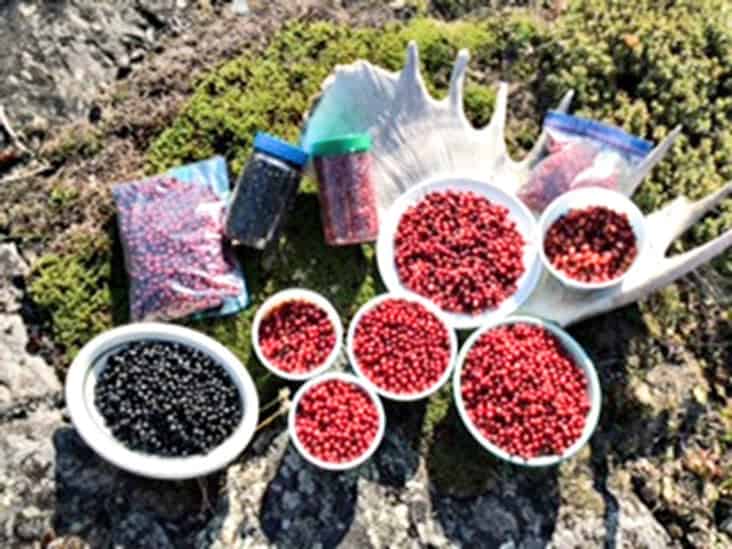I think this year should go down in the historic annals of Yellowknife legend and lore as “El Very Berry Bonanza.”
There are lots of them everywhere that berries grow this time of year especially the low bush cranberries and crowberries. The rose hips aren’t bad either.
As you are walking along and you spot a patch loaded with berries, you call to your fellow pickers and yell, “I’ve found a bonanza of them.”
The word bonanza was originally a Spanish word meaning plentiful or good weather. When it came into the English language it got twisted around to mean sudden wealth, riches or money. So, it gained a lot in the transition.
On the other hand, the name low bush cranberry is a bit of a misnomer because they aren’t really cranberries. Also, there are some myths and legends that surround them. Some people don't pick them until the first frost and that is a rule they steadfastly stand by. They act as if it is almost a curse to pick them before the frost and that the premature pickers are heathens committing a sacrilege against the cranberry gods.
I of course disagree. Pick 'em when you can and when you want to, I say, and I like to pick 'em before it gets too cold and miserable. Also, the ancient Norse god Lingon is a rather kind and benevolent soul. He doesn’t mind when or where you pick 'em, and his attitude is that the berries were created to be plentiful, so pick as many as you want but leave some to seed next year and try not to damage the plants.

Personally, I enjoy picking berries in the fall and I look forward to it. When I was younger I used to get a lot by the bending over method but now I prefer the sit down and pick around you approach. I also crawl, bum slide, walk or even roll to the next picking spot. Did I mention it is best to wear old clothes when you go berry picking? Because if you are anything like me you are going to have berry stains scattered about any part of you that contacts the ground.
Picking berries may not be considered a sport but it is certainly a physical activity and an enjoyable way to spend a sunny fall afternoon. One could even turn it into a competition for who picks the most to get young people involved. Personally, I think berry picking should be part of the fall curriculum in the North followed by classes in how to prepare, cook and use them.
Now the two questions newcomers often ask are, “Where do I find the berries and what does one do with them?” If you understand the plants, where and how they grow that certainly helps. I like to think of it as the plants spirits at work.
For finding them, I usually start with the outcrops because the walking is easier. On the outcrops or at their edges where the forest starts one can find rose hips. They like open spaces with lots of sunlight. They are pretty to look at when in bloom and the rose hips are often beautiful. The problem is not picking them but doing something with them afterword because you have to get rid of all the seeds. If you eat the seeds you will discover why they are sometimes called itchy-bums. One can also find juniper berries and a few go a long way to add seasoning to things.
Then near the outcrop edges you find patches of bearberries. They are reported to have medicinal properties, but few people pick or eat them although, as the name implies, the bears apparently like them. Bearberries like drier soil and more sun then the lingonberries so as you enter the woods the lingonberries begin to appear mixed in with the bearberries and if the woods are open they turn into patches of lingonberries. Lots and lots of them this year. I also look for birch trees which also like more water and lingonberries seem to like growing around them. Crowberries like moist or almost swampy areas. They can often be found along the wetter areas of old trails, snowmobile paths or portages
Berry season if a big deal in the North because it is a great time to stock up on a year’s supply of these flavoured gems. You can dry them, freeze them or make sauces, jams and jellies.
Since we have them in abundance I think we should learn more about them and utilize them much more than we tend to.
You could have berry picking yoga classes or write a treatise on Zen and the Art of Berry Picking. Or you could just go out to enjoy a beautiful fall day and do a little picking.